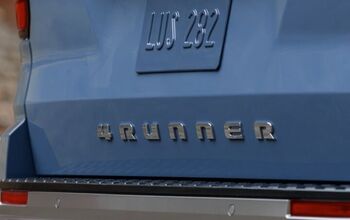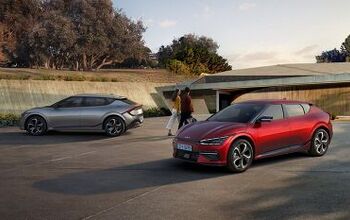Honda's Ditching VTEC in Its New 3.5L V6 Engine

There are some obscure facts that only hardcore auto enthusiasts get, but VTEC is almost universal. As evidenced by the number of memes and videos of people pretending to be blown away by “VTEC kicking in.” Unfortunately, Honda’s ditching VTEC, at least on its 3.5-liter V6.
The automaker is moving to a DOHC (dual-overhead-cam) V6 instead. It’s the first naturally aspirated DOHC engine since the original NSX. The reasoning is simple: Emissions. Honda notes that the new V6 sports a massive 40 to 50 percent reduction in emissions. Without diving into an engineering conversation, the engine uses direct injection and features more exact fuel delivery. Cam phasers also make continuous adjustments to intake and exhaust timing.
Leaving VTEC doesn’t mean a drop in power. The new engine gains five horsepower, now making 285 ponies. Torque remains static, at 262 pound-feet. In terms of performance, the DOHC unit will likely feel similar to the outgoing VTEC. The difference comes in flat-out acceleration, where the lack of a surge at higher RPMs will be immediately noticeable.
You might wonder why Honda’s pouring money and effort into developing a new internal combustion engine. The automaker has been slow to start EV development and recently announced a new business division to help accelerate those efforts. In the meantime, Honda needs a powertrain for its minivan, SUVs, and pickup, and a much cleaner V6 is the ticket.
[Image: Honda]Become a TTAC insider. Get the latest news, features, TTAC takes, and everything else that gets to the truth about cars first by subscribing to our newsletter.

Chris grew up in, under, and around cars, but took the long way around to becoming an automotive writer. After a career in technology consulting and a trip through business school, Chris began writing about the automotive industry as a way to reconnect with his passion and get behind the wheel of a new car every week. He focuses on taking complex industry stories and making them digestible by any reader. Just don’t expect him to stay away from high-mileage Porsches.
More by Chris Teague


































Comments
Join the conversation
I'll never forget how annoying those VTEC kids were back in high school and early college
V6 Accord owner here. The VTEC crossover is definitely a thing, especially after I got a performance tune for the car.
The loss of VTEC will probably result in a slower vehicle overall for one reason: power under the curve. While the peak horsepower may remain the same, the amount of horsepower and torque up to that peak may be less overall. The beauty of variable cam lift is not only the ability to gain more power at upper rpm’s on the “big cam”, but the ability to gain torque down low on the “small cam”. Low rpm torque gets the vehicle moving and then big horsepower at upper rpm’s gains speed. Having only one cam profile is now introducing a compromise versus the VTEC setup. I guess it’s possible that with direct injection they are able to keep the low rpm torque there (I’ve read that DI helps with low rpm torque) but I’m skeptical it will match a well tuned variable lift setup.
I was a little disappointed to see that the 2.0T was not offered; lots of low end torque would be much appreciated. In this day and age, V6 doesn't necessarily mean better
Honda hasn't had VTEC since the end of the 8th generation Civic Si. They've stamped the brand on simple karen-spec variable valve timing, but it's not the 3-lobe on/off cam profile with the kick.